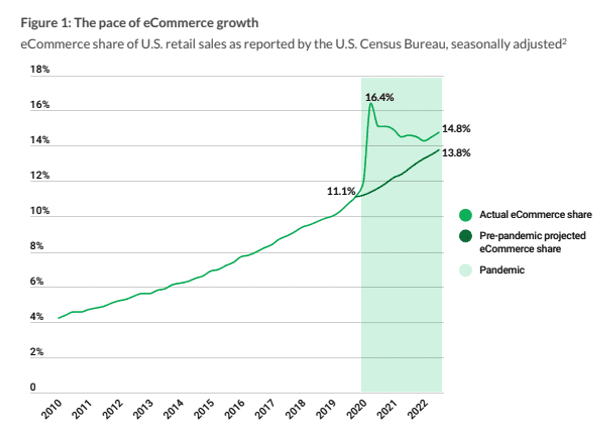Large swaths of the U.S. are still without high-speed broadband internet service at the third anniversary of the pandemic lockdowns, keeping millions from enjoying the digitally connected economy. A prime culprit: utility poles owned by power and legacy telephony providers.
Efforts to bring connectivity to rural America have come and gone through various White House administrations for 20 years and have typically centered on rural school systems being underserved. But participation in the digital economy is joining that as a critical concern, from access to vital services like telemedicine to eCommerce, to streaming content and more.
On March 1, the Biden Administration’s Internet for All initiative announced its latest grants through the Department of Commerce’s National Telecommunications and Information Administration (NTIA), saying 20% of U.S. households still lack an internet connection.
However, as The Wall Street Journal noted on Sunday (March 12), getting reliable high-speed internet to remote communities currently relies on laying fiber optic cable across utility poles owned by the likes of AT&T and energy delivery enterprises including Exelon Corp., that generally feel they aren’t getting paid to upgrade forests of utility poles for broadband.
Recalling widespread views that the pandemic packed 10 years of digital transformation into less than three years, debates around upgrading this infrastructure are accelerating as COVID caused an exodus of city dwellers to more remote communities, reenergizing the issue.
Advertisement: Scroll to Continue
Looking at PYMNTS research into how people with broadband access live, work, and pay, and how the conveniences of the digital shift are powering more choices and better services from discounted groceries to emergency medical attention, the access issue is heating up.
The PYMNTS report “Digital Economy Payments, February 2023 U.S. Edition,” notes, “Based on a combined analysis of data from PYMNTS’ Quarterly Payments Survey and the Bureau of Economic Analysis (BEA), eCommerce represents 21.7% of annual retail sales in Q4 2022, up from 21.3% in Q3.”

Were the roughly 20% of U.S. households currently without high-speed internet to get that connectivity, it follows that digital activities would increase accordingly, improving consumers’ lives while enlarging the overall connected digital economy.
Expand that to telemedicine, digital banking, and other such services, and the opportunity represented by under-connected communities comes into more precise focus.
Read: Digital Economy Payments, February 2023 U.S. Edition
PYMNTS’ ConnectedEconomy™ Index defines digital transformation as the number of consumers who use digital methods to engage in any activity, the number of digital activities they engage in, how frequently, and whether that access is for purchasing (transactional activities) or enjoying digital content and services (access activities).
There’s a strong correlation between consumer satisfaction and digital services. In the 2023 Global Digital Shopping Index, a PYMNTS and Cybersource collaboration that examines the behaviors of over 13,000 consumers and more than 3,100 merchants in six nations, consumers in highly connected nations like the U.S. see merchant satisfaction decline when certain digital services like in-store smartphone use is curtailed, illustrating the impact of digital access.
The Wall Street Journal report called out the case of ISP Charter Communications, owner of Spectrum internet services, and its squabble with Warren Rural Electric, a utility company, over a disagreement of this kind. It’s one of dozens of similar cases around that nation.
See also: The 2023 Global Digital Shopping Index
“Charter is spearheading the campaign to change rules that generally require internet providers to foot the bill if new poles are needed for a broadband project,” per WSJ. “The company says that is a windfall for the pole owners who essentially get a new pole free. It is also lobbying state or federal governments to pay for new poles and create faster systems for resolving disputes.”